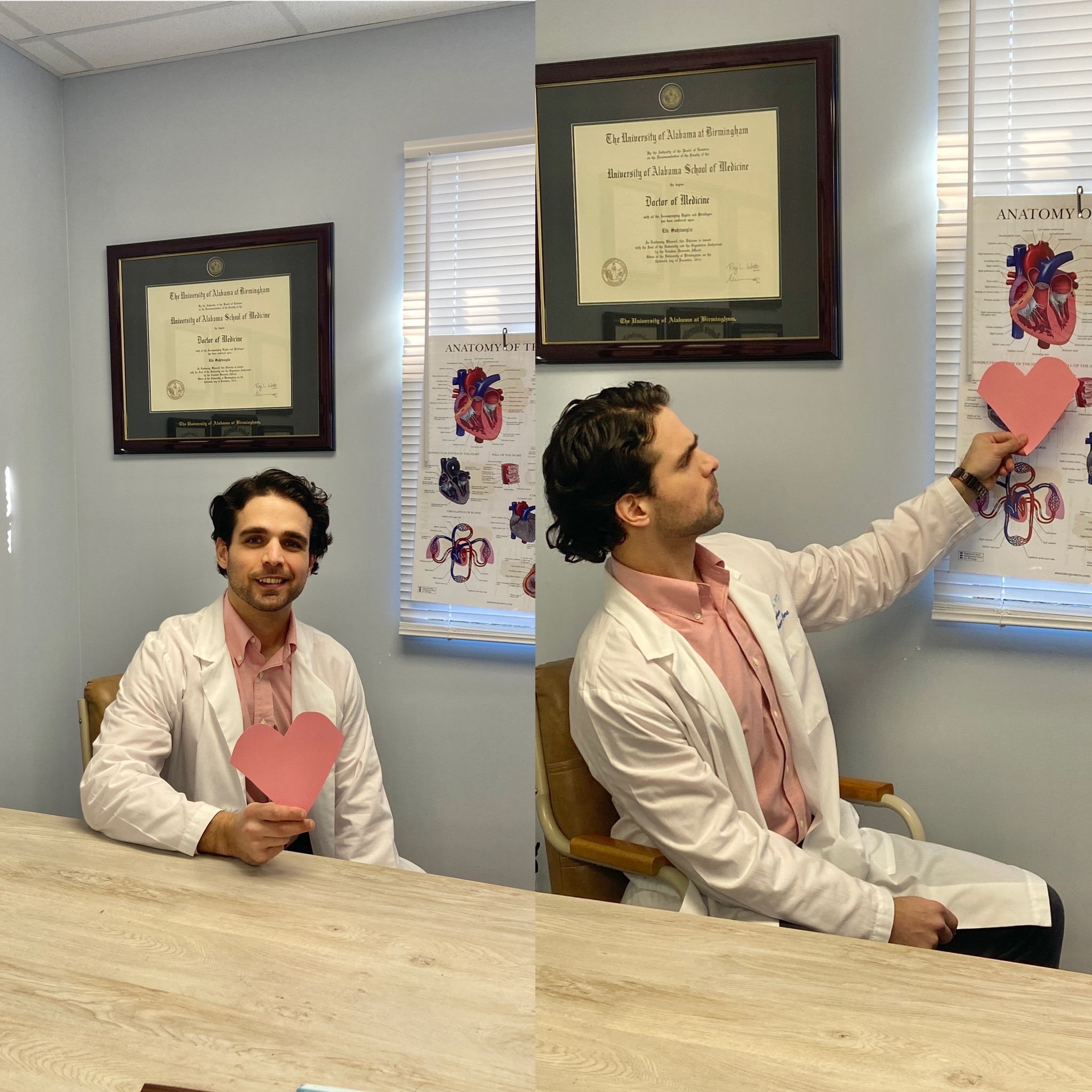Cardiovascular and other circulatory disorders include coronary artery disease, disease of the veins (i.e. peripheral vein disease) and arteries outside of heart, heart rhythm disorders, valvular heart disease, heart failure, and congenital heart disease. Among diseases of arteries outside the heart is stroke, where basically there’s a blockage in the blood supplying a part of the brain or when blood vessel in the brain bursts. Then there are other conditions that often go hand to hand with heart disease, such as diabetes and chronic kidney disease.
What are the key risk factor for heart disease? High blood pressure (Hypertension), High cholesterol, and tobacco use. Recent data shows us 1 out of every 2 people in the US have at least one of these risk factors. Yes, this may be a discouraging statistic, yet here is the encouraging angle. We – the patient and the doctor working hand to hand as a team- can help eliminate these risks.
What else contributes to or is a risk factor for heart disease? Unhealthy diet, physical inactivity, unhealthy weight, which you may sometimes hear in more technical medical terms as overweight and obesity, excess alcohol use, and diabetes.
“Hold on doc, I blame everything on my parents or the genes they passed on to me. You didn’t mention genes!” Yes, genes do play some role in heart disease or in some of the conditions above that can increase risk for heart disease. There’s no doubt. However, often there is a potential for more than just the genes to be inherited in one with family history of heart disease. This can be due to sharing the same environment and can include unhealthy eating, inactivity, smoking and excessive alcohol intake. When unhealthy habits or lifestyle choices are coupled with an inheritable risk factor, this further intensifies one’s risk for heart disease.
The good news is most of this is preventable. That is correct. Most cases of heart disease can be avoided with starting or continuing a healthy lifestyle consisting of:
– Getting to a healthy weight and keep it
– Staying tobacco free
– Keeping a healthy blood sugar and cholesterol
– Getting to and Keeping a normal blood pressure (meaning treating it to normal level if hypertensive)
– Getting aerobic exercise frequently and staying active
– Following a Heart-healthy diet
– Decreasing stress and keep it low
– Going to your at least annual check ups with your primary care doctor, where we discuss your health, determine if there’s a need for certain labs, imaging or other screening modalities that might involve procedures, and hone in on a healthy lifestyle, including but not limited to above items, and develop a plan to help achieve or maintain it.
Food is the most widely abused anti-anxiety drug in America, and exercise is the most potent yet underutilized antidepressant. I couldn’t agree with this saying more. Yet I would also insert “and meditation” after the word “exercise” and call them underutilized antidepressants and anxiolytics (or anti-anxiety agents). Work yourself up, gradually of course, to getting at least 30 minutes of a brisk walk five days of the week. Eat more slowly and mindfully. Make eating healthy, exercising and meditating a habit. Habits take practice. Start the practice now instead of after finding out an unhealthy lab value, imaging finding or unexpected diagnosis. We all have our challenges in life. However, when we are able to equip ourselves with tools – aforementioned habits- it helps our bodies and minds stay healthy and resilient when going gets tough.
That’s it for now. Until next time. Have a great rest of your day.
Take care,
Dr. Efe Sahinoglu with Birmingham Direct Primary Care
ps If you would like to us to work with you to help improve your health, click here to join Birmingham Direct Primary Care and start your journey to a better health today by teaming up with Dr. Sahinoglu.
